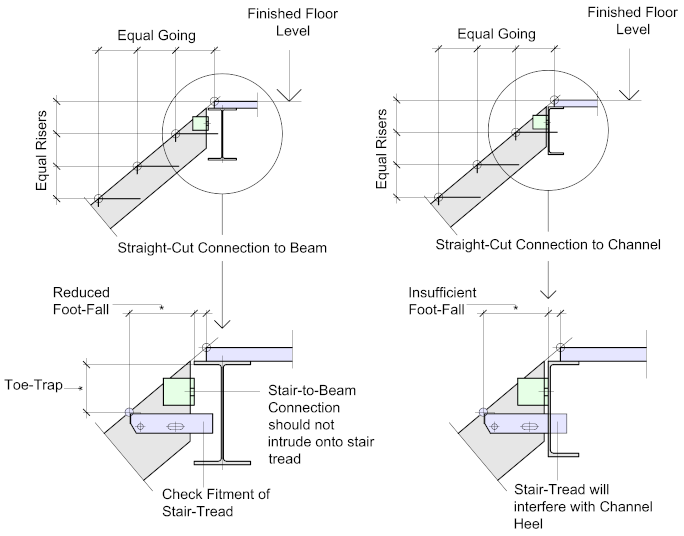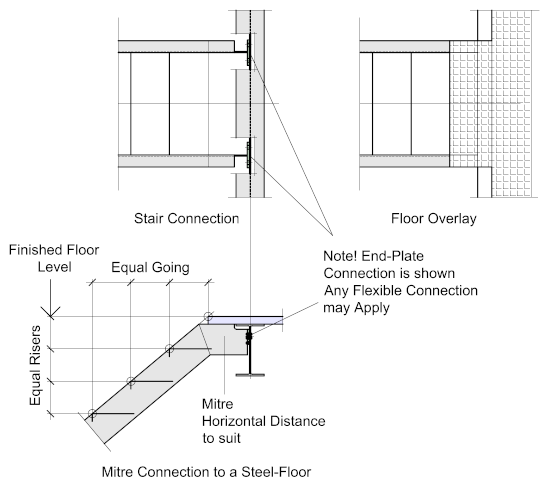Straight-Cut Connection to a Steel Floor
Top connections require a little more thought. If an accident happens on a stairway, it’s likely to be at the top during a descent. It’s important that the principle of ‘goings’ and ‘risers’ is observed here, particularly with regards to the top step. The approach to the stair should ideally have a clearly defined lead-in, which means the sighting-line should be observable from the top landing.
There are basically two means of connecting the stair stringer at the top of the rise, first is the ‘Straight-Cut’ and second is the ‘Miter’. The straight-cut, where the stair stringer is cut at an angle to bring it to an angle perpendicular to the supporting beam, appears the simplest and most obvious, but it can be problematic in some instances.
When connecting to an -I- section beam, in all probability the stair-tread will intrude into the beam profile, in doing so, the Foot-Fall onto the first tread will be reduced and there is the possibility of a Toe-Trap being created between the stair-tread and the underside of the supporting beam flange. When connecting to the heel of a channel, in all likelihood, the ‘standard’ stair-tread will interfere with the heel resulting in the necessity of a ‘special’ tread, which will reduce the Foot-Fall further. Though this principle is widely applied – it’s not good practice and presents an unacceptable risk.

Also, the connection itself must be carefully considered, ideally, it should be on the outside of the stringer so as not to interfere with the landing on the stair-tread. If the stringer is a flat-plate, it shouldn’t be a problem, but a channel section stringer will complicate things further.
Sometimes, the horizontal total distance is restricted, forcing this connection type to be used, and in certain circumstances it will be found to be acceptable, but it should not be used in cases of heavy foot-traffic, public access, or emergency escape routes, the inherent Trip-Hazards are too great.
A safer option is to ‘Crank’ the stringer at the top, allowing a short horizontal section in order to make the connection, it will take up more space, and will create more work for the fabricator, but the cleaner-look and additional safety benefits will outweigh these disadvantages.
Miter-Cut Connection to a Steel Floor
The cranked section provides an excellent lead in to the stair enabling the floor, whether it be an open grid type or raised pattern plate, to run smoothly over the floor replacing the top stair tread.
With this option, the reduced Foot-Fall and potential Toe-Trap are removed.
The stringer can be attached to the supporting beam by any of the Flexible Connection options.

